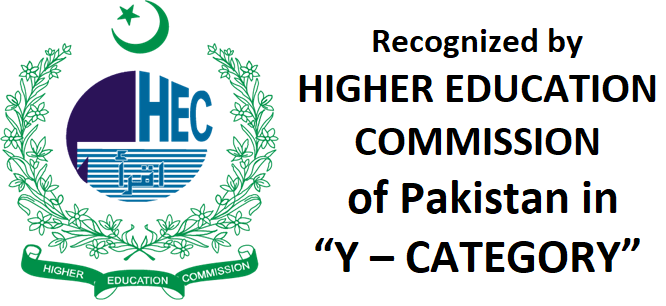Bumping along: Healthcare students' perspectives on interprofessional education
DOI:
https://doi.org/10.33897/fujrs.v4i1.339Keywords:
attitude, collaboration, interprofessional education, readiness, studentsAbstract
Background: Global regulatory bodies and the PM&DC (Pakistan Medical and Dental Council) share a competency framework that emphasizes the importance of graduates being effective communicators and collaborators in the healthcare system to achieve positive patient outcomes. However, due to unclear roles, conflicting power dynamics, and varying educational qualifications among healthcare professionals, effective interprofessional teamwork is often not realized, leading to suboptimal outcomes.
Objective: To evaluate the attitudes and readiness of healthcare students towards inter-professional education.
Methods: This comparative cross-sectional study was conducted from March to August 2020 by utilizing a prevalidated inventory called the Readiness of Interprofessional learning scale (RIPLS) to assess the readiness of students in healthcare programs. Data was collected using Google Forms, and the Kruskal-Wallis Test was employed to compare perceptions among the four groups.
Results: 157 students completed the questionnaire, resulting in a response rate of 58%. All four groups demonstrated high readiness for mutual learning (mean rank=78.78) although physiotherapy students had higher scores (mean rank=79.36) compared to the other groups, while nursing students had the lowest scores (mean rank=77.92).
Conclusion: The positive attitude of students towards interprofessional education and collaboration highlights the need for integration with other healthcare disciplines at both the curricular and co-curricular levels. Clinical case studies, problem-based learning, and simulations can be effective methods for fostering students' understanding of each profession's role.
Downloads
Published
Issue
Section
License
All Articles are made available under a Creative Commons "Attribution-NonCommercial 4.0 International" license. Copyrights on any open-access article published by the Foundation University Journal of Rehabilitation Sciences (FUJRS) are retained by the author(s). FUJRS is an open-access journal that allows free access to its published articles, in addition, to copy and use for research and academic purposes; provided the article is correctly cited. FUJRS does not allow commercial use of the articles published in FUJRS. All articles published represent the view of the author(s) and do not reflect the official policy of FUJRS.



